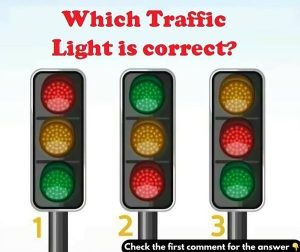The Meaning Behind Traffic Lights: Understanding the Colors That Keep Us Safe
Traffic lights are a crucial part of everyday road safety, ensuring that vehicles and pedestrians move smoothly through intersections. While we all know the basics—red means stop, yellow means slow down, and green means go—there’s more to these colors than meets the eye. In this article, we’ll take a closer look at what each traffic light color really represents and how they work together to keep everyone safe on the road.

The Purpose of Traffic Lights
Before diving into the individual colors, let’s start with the big picture: the overall purpose of traffic lights. These signals are designed to manage the flow of traffic and reduce the risk of accidents at intersections and crosswalks. By providing clear rules for when to stop, slow down, and go, traffic lights help prevent confusion and ensure that both drivers and pedestrians move in a safe, orderly fashion.
Now, let’s break down the significance of each color.
Red Light: The Command to Stop
The red light is perhaps the most recognized of all the traffic signals. It commands immediate attention and universally means one thing: stop. Whether you’re driving, biking, or walking, a red light signals that you must come to a complete stop before proceeding.
But why red? Red has long been associated with danger and caution. In traffic, the red light creates a boundary that must not be crossed until it’s safe, preventing accidents and keeping people safe.
Key Points About the Red Light:
- Requires drivers and pedestrians to stop completely.
- Usually lasts the longest to allow cross-traffic to pass.
- Running a red light is a serious traffic violation that can result in fines or accidents.
Yellow Light: The Warning to Slow Down
The yellow light serves as a transitional signal between red and green. It warns drivers that the light is about to turn red, signaling them to slow down and prepare to stop. However, yellow lights can sometimes cause confusion—some drivers speed up to beat the red light, while others slam on their brakes.
The purpose of the yellow light is to provide a brief pause, allowing vehicles already in the intersection to pass safely while warning others to prepare to stop.
Key Points About the Yellow Light:
- Alerts drivers that the light is about to turn red.
- Signals drivers to slow down, not speed up.
- Helps clear the intersection before the red light appears.
Green Light: The Signal to Go
The green light is the signal that everyone looks forward to—it means go! It tells drivers and pedestrians that it’s safe to proceed through the intersection, as long as the path is clear. However, it’s important to check for any hazards, like red-light runners or pedestrians, before moving forward.
Green lights often include arrows, which indicate that drivers in a specific lane can make a turn without interference from oncoming traffic.
Key Points About the Green Light:
- Signals that it’s safe to proceed.
- Requires checking for hazards before moving.
- Green arrows guide turns safely at busy intersections.
Working Together for Road Safety
Traffic lights may seem simple, but they play a crucial role in keeping us safe. Each color—red, yellow, and green—works together to manage the flow of traffic and reduce accidents. Understanding the meaning behind these signals is key to being a responsible driver. Whether stopping at a red light, slowing down at yellow, or moving forward on green, following traffic signals helps ensure everyone’s safety.





